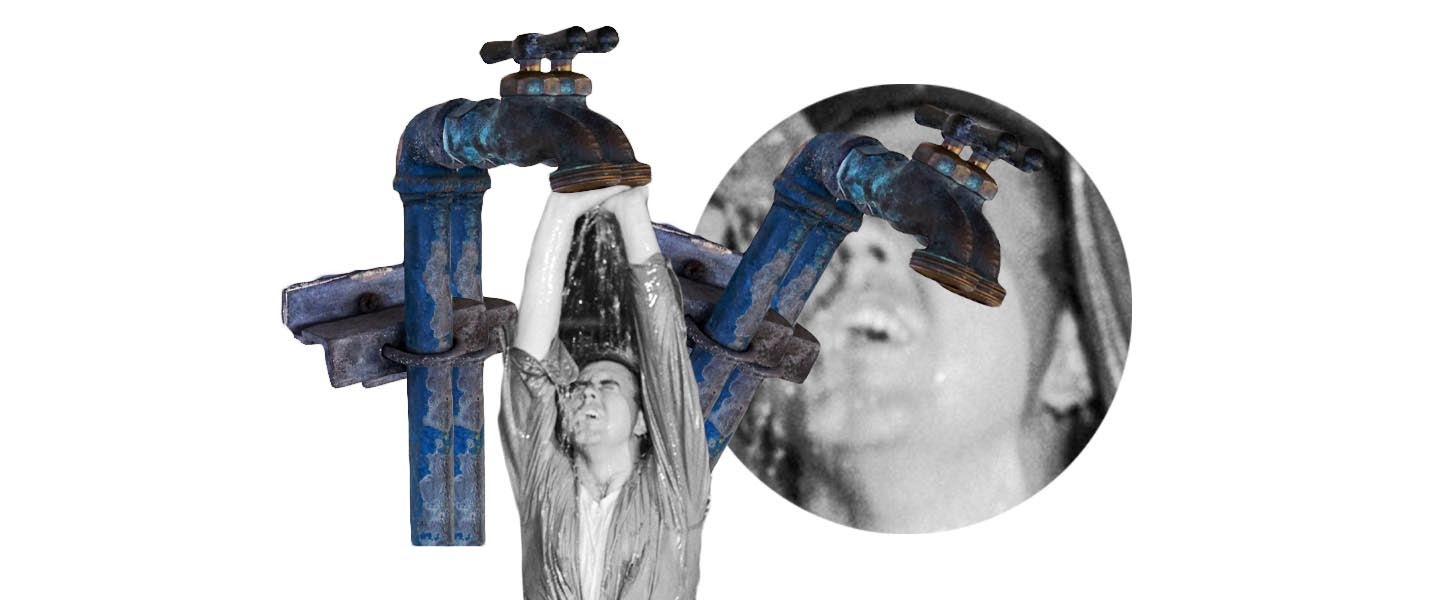The mysteries of precum are vast. In fact, despite 90,000,000 Google results for it, the most apt description of precum is probably a tweet that compares it to what squirts out of a ketchup bottle before the ketchup itself.
Meanwhile, no one seemingly understands its potency. To that end, there are baby onesies that read “precum is real,” but also women who claim that their boyfriends don’t have any precum at all. As for the science, although approximately 4 out of 100 women become pregnant from the withdrawal or pull-out method, it’s impossible to know if a baby was conceived from precum. “There’s no magical sexual technique for birth control, and the body is the body,” urologist Jamin Brahmbhatt explains. “So there’s always a chance of conceiving from precum.”
Essentially, that infinitesimal amount of virtually invisible liquid is as complicated as it is elusive. Allow us, however, to help you better understand this coital apéritif.
ketchup pre-cum exists and you all know what I'm talking about
— Gwen Thomas (@gwenthomas33) December 1, 2019
What Is Precum Anyway, and What Does It Do?
Precum is a transparent fluid produced by the Cowper’s and Littre glands and mostly made of protein, mucus and enzymes. Men normally produce anywhere from a few drops to 5 milliliters of the stuff, but barring sexual dysfunction, anyone who ejaculates also pre-ejaculates. Since the substance is clear and the amount varies, however, it can go unnoticed.
The biological function is to help the body have sex. To perform this task, precum first cleans out the urethra, ridding it of acidic residue left behind by urine, so sperm can travel through. “Pre-ejaculate lubricates the urethra to allow the semen to slide out more easily,” explains Stanton Honig, director of Male Urology at the Yale School of Medicine.
Is Precum Effective Lube?
Brahmbhatt adds that precum similarly acts as a natural lubricant during intercourse to make sex more enjoyable. “It’s a natural process to help with lubrication, just like females get self-lubrication,” he notes. The key difference is that precum is only advisable lube for people using other forms of birth control or couples trying to conceive. Everyone else should get their lube from the bottle.
Is It Safe? That Is, Does Precum Have Sperm, and Can It Cause Pregnancy?
Pre- and regular cum (or is it come?) derive from completely different parts of the male anatomy. That is, cum is produced by ejaculatory ducts, and precum is produced by accessory sex glands and doesn’t contain any sperm. Still, the penis isn’t a perfect system. It’s composed of three separate tubes that are very close together and valves that are designed to open during orgasm, but sometimes leak.
For instance, when a man doesn’t ejaculate for a long time, he might see some cum in his urine because of the build-up. The same goes for precum. (This may be why “does precum count in NNN” — for No Nut November — remains a popular search query. So are “is precum nofap failure” and “is precum relapse nofap.”)
There’s always a chance that some ejaculate will leak, and it’s plausible those odds increase the longer men go without orgasming. Because this hasn’t been properly studied, Brahmbhatt is cautious about saying for sure, but he acknowledges an increased risk of pregnancy among the NoFap community makes physiological sense.
“But you’re also more likely to prematurely ejaculate in those cases, so there are a lot of variables,” Brahmbhatt says. “You should always assume that there’s some mixing, because science has proven that it does occur.”
Scientists know this, not just from unplanned pregnancies resulting from the pull-out method, but from testing samples of pre-ejaculate in the lab. Research shows that anywhere from 17 to 37 percent of precum samples contained sperm, and while study authors suggest that peeing before you have sex may help flush out lingering sperm that could mix with precum, Honig and Brahmbhatt argue it’s not worth the risk. “If you’re using the pull-out method and depending on your precum being sterile, that’s not safe,” Brahmbhatt says.
“The pull-out method is suboptimal,” Honig agrees. “The chances of getting pregnant are still low without a condom, but without a condom, it won’t prevent the spread of STIs.”
Is It Precum or a Sexually Transmitted Disease?
Men can produce it anytime they feel sexually aroused, not just before sex, making it easy to confuse this with discharge from an STI. The best way to tell the difference is if sexual stimulation didn’t occur, or if there’s pain present. But it isn’t always easy to retroactively recall if you were turned on during that time and not every STI causes pain symptoms. And so, men should always consult a doctor if they’re not sure what’s coming out of their dicks, just in case.
Can Precum on a Condom Cause Pregnancy?
Anywhere from 4 to 30.4 percent of people admit to putting on a condom inside-out and flipping it around the right way, instead of throwing it away and using a new condom, according to a review of 50 studies about contraceptive errors. When they do this, they may expose their partners to precum, and by extension, sperm.
“Sometimes, when you put a condom on, there’s precum on the tip of the penis that could then go on the outer tip of the condom and get shot deep into a woman when the condom is put on and inserted,” Niki Davis-Fainbloom, a sex educator and coach, confirms. “That’s why we always tell people to throw out condoms if they first put it on the wrong way and never switch it around.”
If you don’t, that’s how you learn about precum the hard way.

